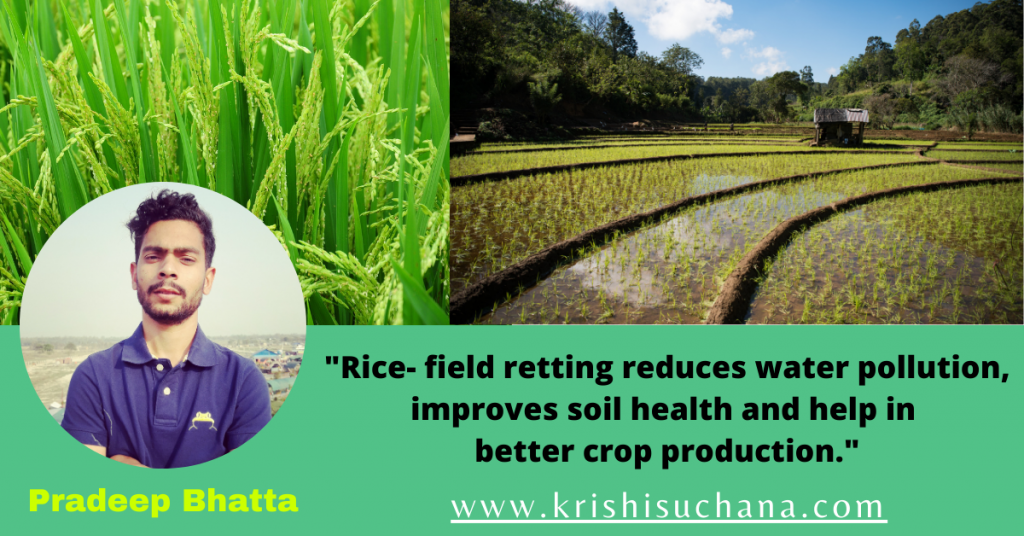RICE – FIELD RETTING

Retting is the aerobic and anaerobic microbiological process by which the fiber in the bark get loosened and separated from the woody stalk.
Retting is done after the harvest of jute. Generally, retting is carried out in traditional ways in ponds, ditches or canal in context of nepal.
Generally, Rice-field retting technique is not in practice in our country .
Jute cultivation is done in month of chaitra to jestha and harvested after four month of planting, where as rice cultivation starts from ashar to shrawn at the time of monsoon and immediately after harvesting rice-field retting is easily adopted.
Rice- field retting is one of the improved technique of retting. This techniques was carried out in field with sufficient water.
This techniques was developed in northern, china to take the advantage of time and land available between two crops of rice.
The bunds of the rice field are raised to enable water to be ponded to a depth of about 500mm.
Both stem-retting and ribbon-retting can be practiced in rice-field retting technqiques.
Jute retting was also conducted in the corner of rice field by making artificial ditches. Water was supplied into the ditches from irrigation sources. After the completion of retting, the retting effluents were spread to the rice field and can be utilized as fertilizer for the production of rice.
This technique is recommended wherever farm cropping system may allow.
ADVANTAGES OF RICE- FIELD RETTING
* Rice- field retting reduces water pollution.
* Retting effulents (wastes) remains in the field as green manure.
* Retting effulents contain decomposed matters that are very rich in nitrogenous and organic matters.
* Impounded water gives a measure of control over nematodes infestation.
* Improves soil health and help in better crop production.
* Yield of rice increase from land following rice- field retting.
* Fibers produced from this techniques were of good quality.
DISADVANTAGES OF RICE- FIELD RETTING
* Dark coloured fibers may be obtained from this techniques because of soil contamination
Retting wastes as manure have strong massage and resulted into its adaptation in other countries. so an attempt has been made to find out the feasibility of jute retting effulents in rice field as a fertilizers.
Therefore, jute retting was efficiently conducted in the field and the fibers produced were of fine quality producing ‘A’ grade and the retting was completed within 15 days.
Writer: Pradeep Bhatta (Address: Dhangadhi, kailali,Institute: Gauradaha Agriculture campus, Gauradaha, Jhapa)

